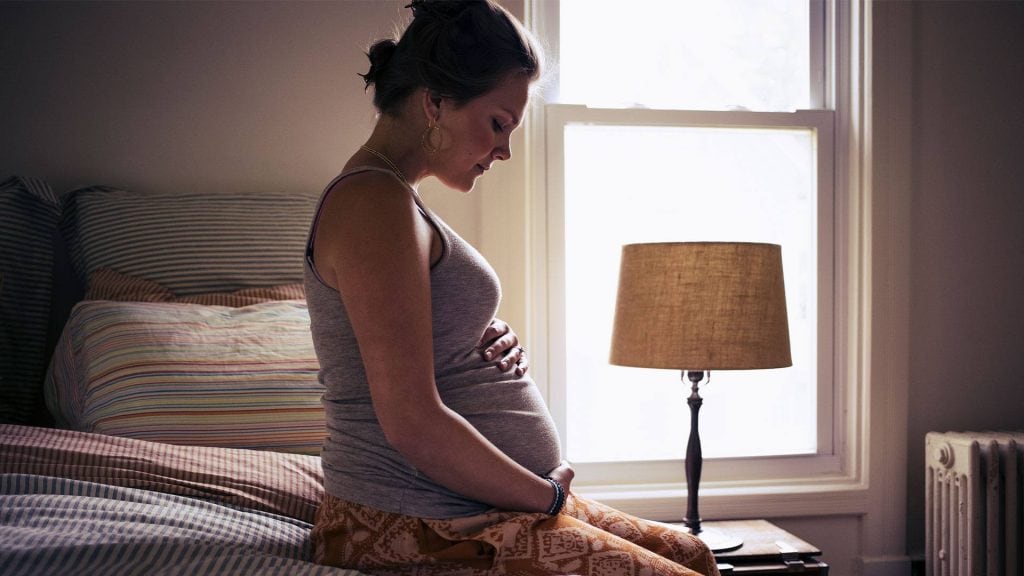Diagnosis
A diagnosis of preeclampsia happens if you have high blood pressure after 20 weeks of pregnancy and at least one of the following findings:
- Protein in your urine (proteinuria), indicating an impaired kidney
- Other signs of kidney problems
- A low blood platelet count
- Elevated liver enzymes showing an impaired liver
- Fluid in the lungs (pulmonary edema)
- New headaches that don't go away after taking pain medication
- New vision disturbances
High blood pressure
A blood pressure reading has two numbers. The first number is the systolic pressure, a measure of blood pressure when the heart is contracting. The second number is the diastolic pressure, a measure of blood pressure when the heart is relaxed.
In pregnancy, high blood pressure is diagnosed if the systolic pressure is 140 millimeters of mercury (mm Hg) or higher or if the diastolic pressure is 90 millimeters of mercury (mm Hg) or higher.
A number of factors can affect your blood pressure. If you have a high blood pressure reading during an appointment, your health care provider will likely take a second reading four hours later to confirm a diagnosis of high blood pressure.
Additional tests
If you have high blood pressure, your health care provider will order additional tests to check for other signs of preeclampsia:
- Blood tests. A blood sample analyzed in a lab can show how well the liver and kidneys are working. Blood tests can also measure the amount of blood platelets, the cells that help blood clot.
- Urine analysis. Your health care provider will ask you for a 24-hour urine sample or a single urine sample to determine how well the kidneys are working.
- Fetal ultrasound. Your primary care provider will likely recommend close monitoring of your baby's growth, typically through ultrasound. The images of your baby created during the ultrasound exam allow for estimates of the baby's weight and the amount of fluid in the uterus (amniotic fluid).
- Nonstress test or biophysical profile. A nonstress test is a simple procedure that checks how your baby's heart rate reacts when your baby moves. A biophysical profile uses an ultrasound to measure your baby's breathing, muscle tone, movement and the volume of amniotic fluid in your uterus.
Treatment
The primary treatment for preeclampsia is either to deliver the baby or manage the condition until the best time to deliver the baby. This decision with your health care provider will depend on the severity of preeclampsia, the gestational age of your baby, and the overall health of you and your baby.
If preeclampsia isn't severe, you may have frequent provider visits to monitor your blood pressure, any changes in signs or symptoms, and the health of your baby. You'll likely be asked to check your blood pressure daily at home.
Treatment of severe preeclampsia
Severe preeclampsia requires that you be in the hospital to monitor your blood pressure and possible complications. Your health care provider will frequently monitor the growth and well-being of your baby.
Medications to treat severe preeclampsia usually include:
- Antihypertensive drugs to lower blood pressure
- Anticonvulsant medication, such as magnesium sulfate, to prevent seizures
- Corticosteroids to promote development of your baby's lungs before delivery
Delivery
If you have preeclampsia that isn't severe, your health care provider may recommend preterm delivery after 37 weeks. If you have severe preeclampsia, your health care provider will likely recommend delivery before 37 weeks, depending on the severity of complications and the health and readiness of the baby.
The method of delivery — vaginal or cesarean — depends on the severity of disease, gestational age of the baby and other considerations you would discuss with your health care provider.
After delivery
You need to be closely monitored for high blood pressure and other signs of preeclampsia after delivery. Before you go home, you'll be instructed when to seek medical care if you have signs of postpartum preeclampsia, such as severe headaches, vision changes, severe belly pain, nausea and vomiting.
From Mayo Clinic to your inbox
Coping and support
Discovering that you have a potentially serious pregnancy complication can be frightening.
If you're diagnosed with preeclampsia late in your pregnancy, you may be surprised to learn that immediate delivery may be recommended. If you're diagnosed earlier in your pregnancy, you may be concerned about monitoring signs and symptoms at home and keeping more frequent appointments with your primary care provider.
It may help to learn more about your condition. In addition to talking to your provider, do some research. Make sure you understand when to call your provider and how to monitor signs and symptoms.
Preparing for your appointment
Preeclampsia is often diagnosed during a regularly scheduled prenatal appointment. If your primary care provider recommends certain tests for a preeclampsia diagnosis, you may also be discussing some of the following questions:
- Did you have preeclampsia or other complications in a previous pregnancy?
- If you're having symptoms of preeclampsia, when did they begin?
- Has anything improved the symptoms or made them worse?
- Have you made any recent changes to your medications, vitamins or dietary supplements?
After a diagnosis of preeclampsia and at follow-up appointments, you might ask the following questions:
- How can I make sure I'm doing blood pressure readings correctly at home?
- How often should I check my blood pressure at home?
- What blood pressure reading should I consider high?
- When should I call the clinic?
- When should I get emergency care?
- How will we monitor my baby's health?
- When should I schedule my next appointment?
- How will we decide on the right time for delivery?
- What are the benefits and risks of delaying delivery?
- What care might my baby need after a preterm delivery?


